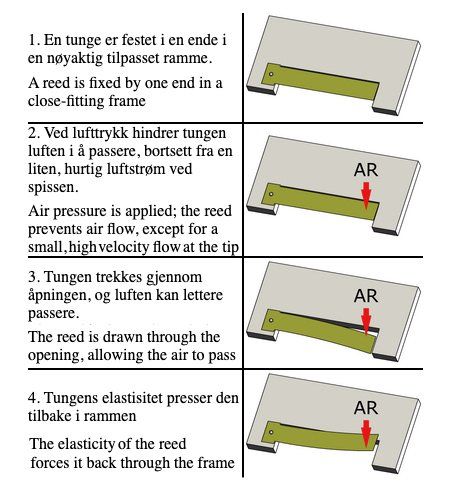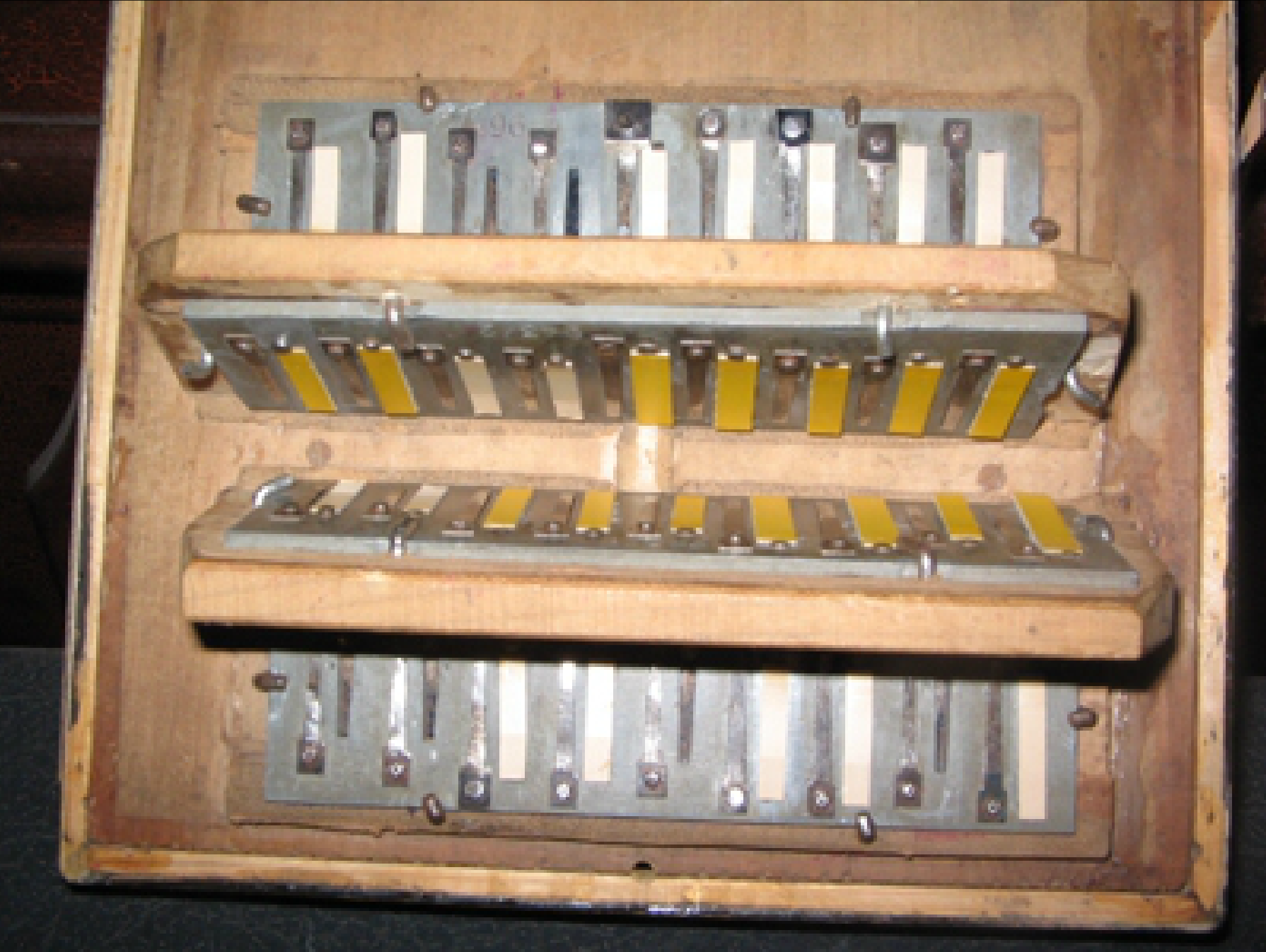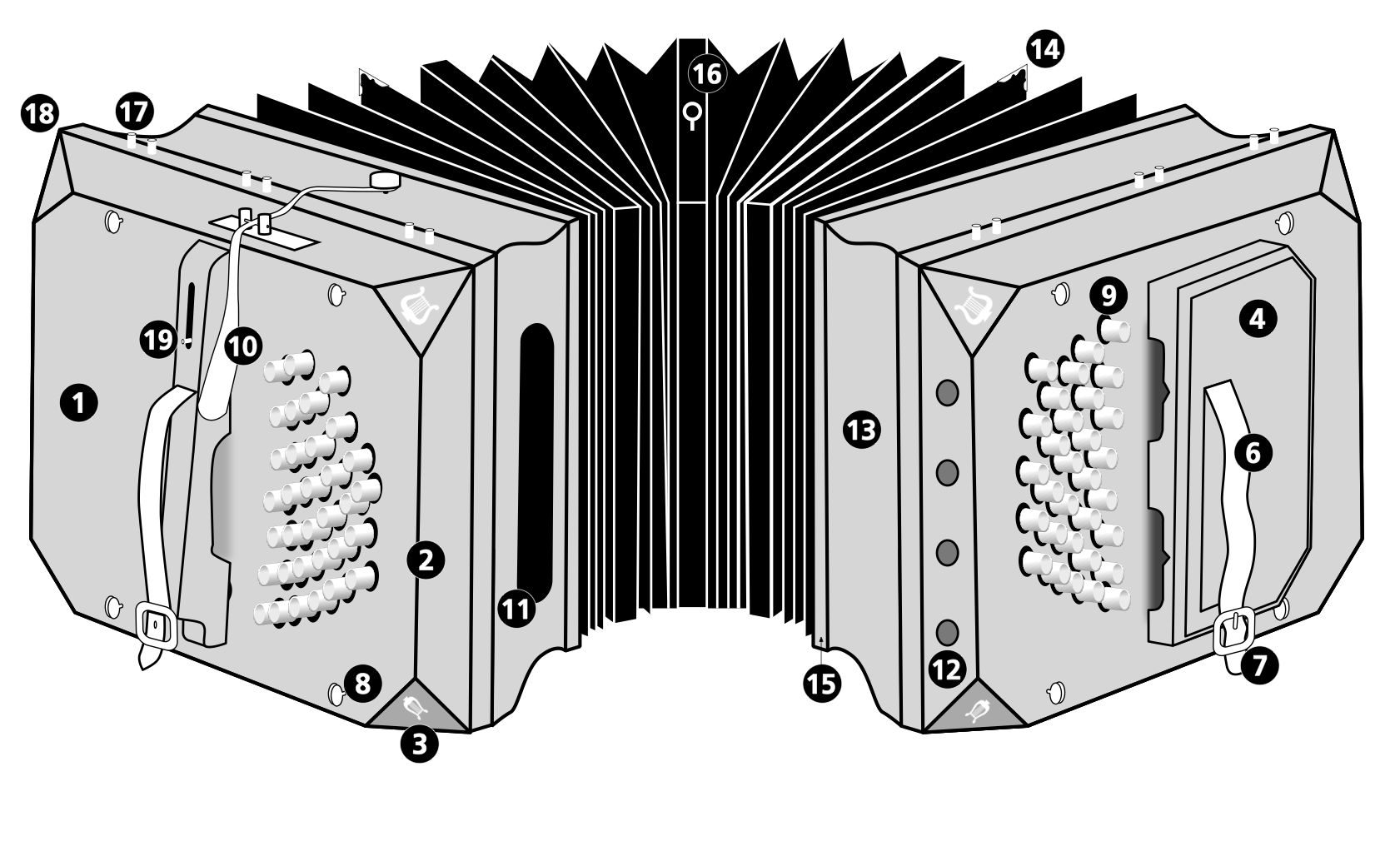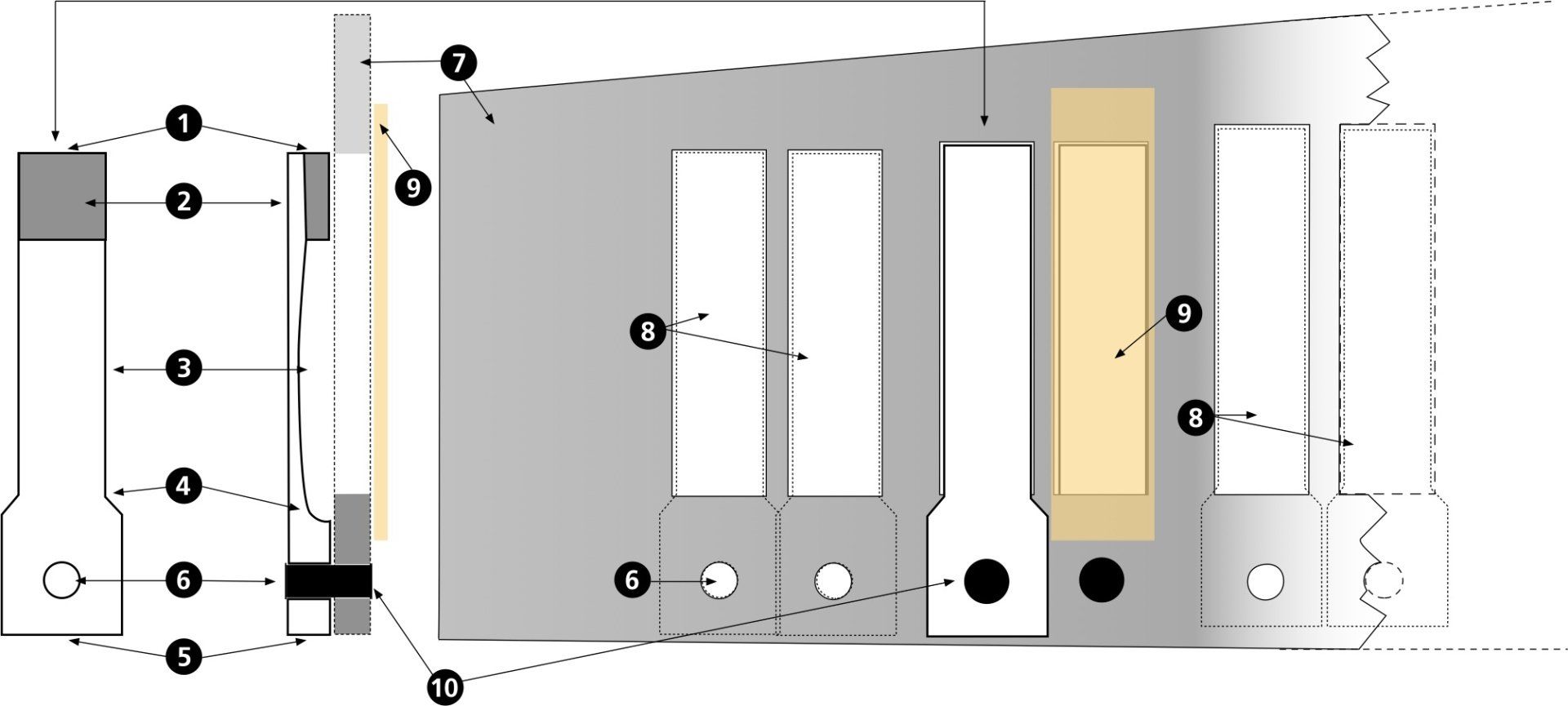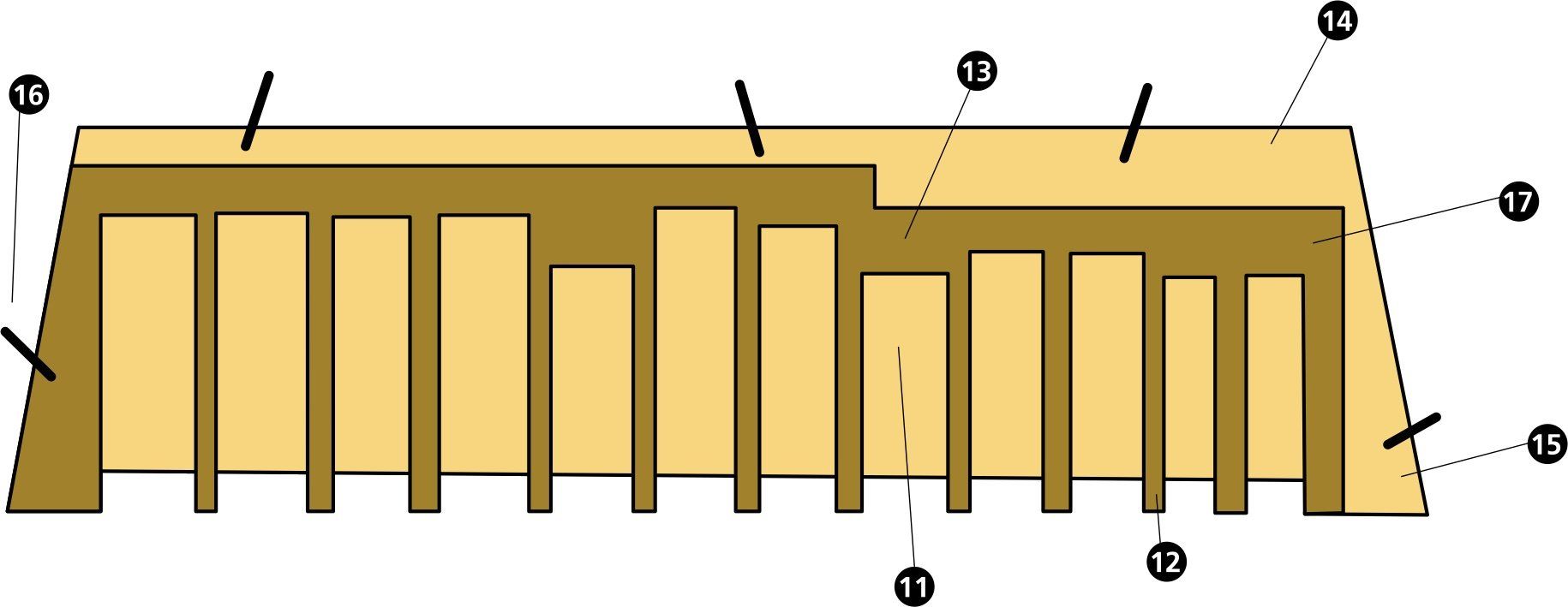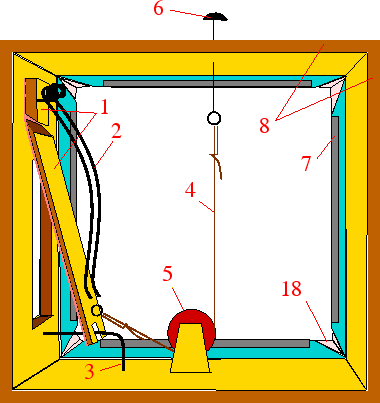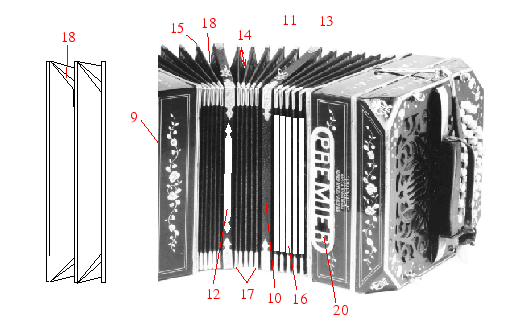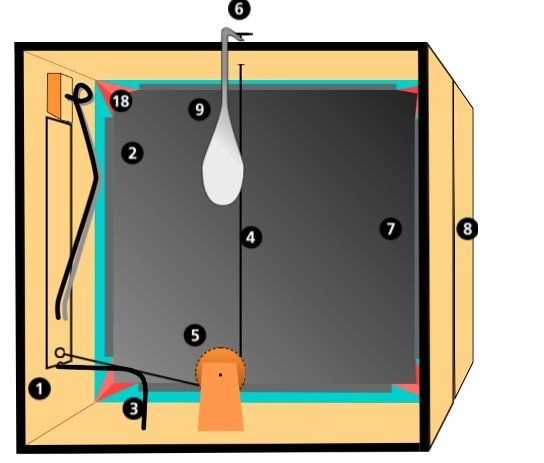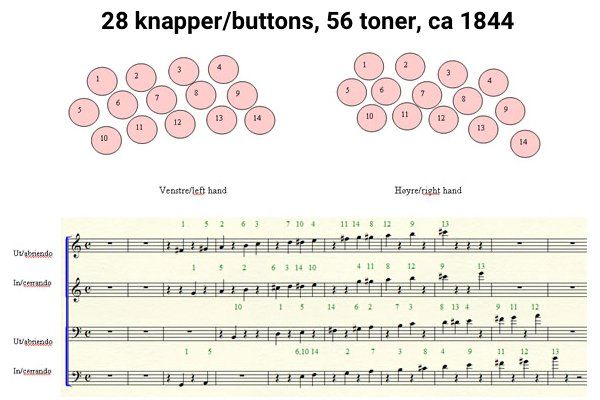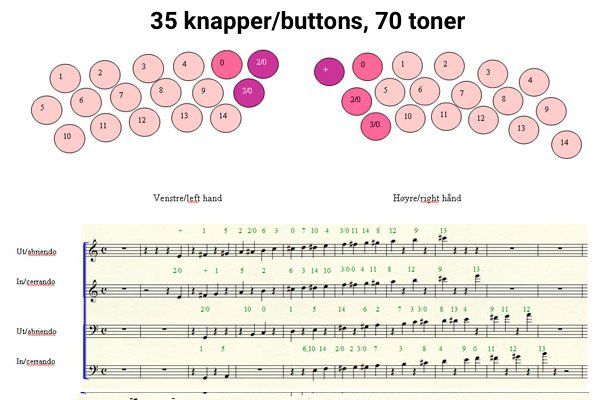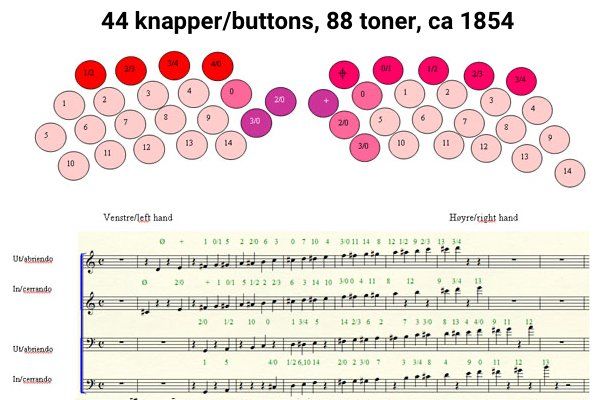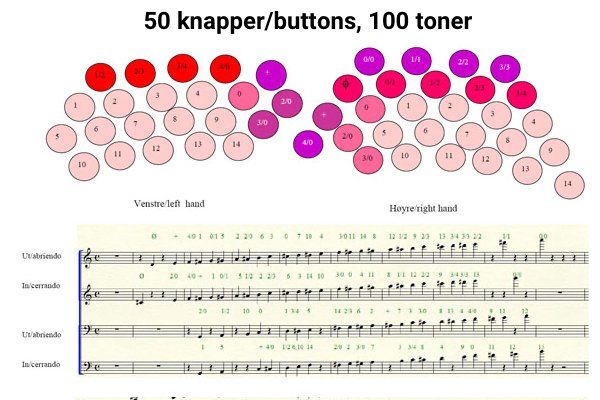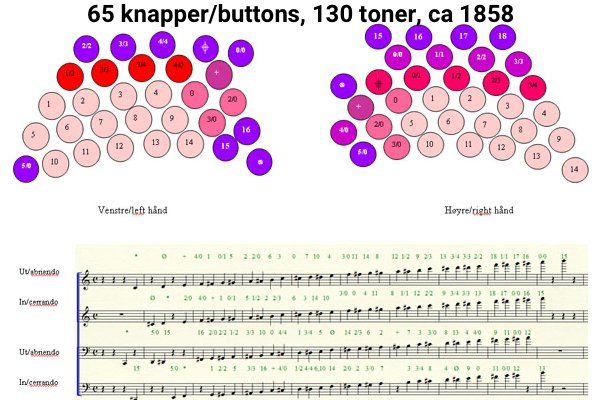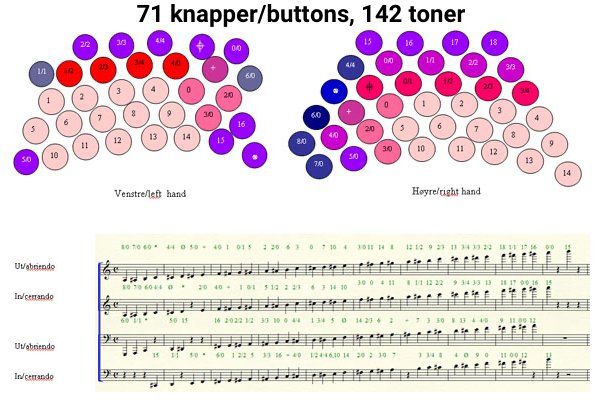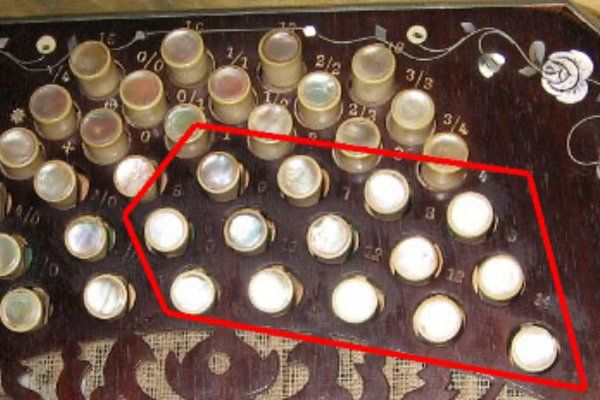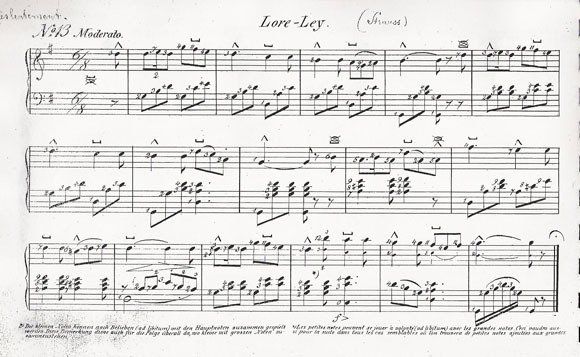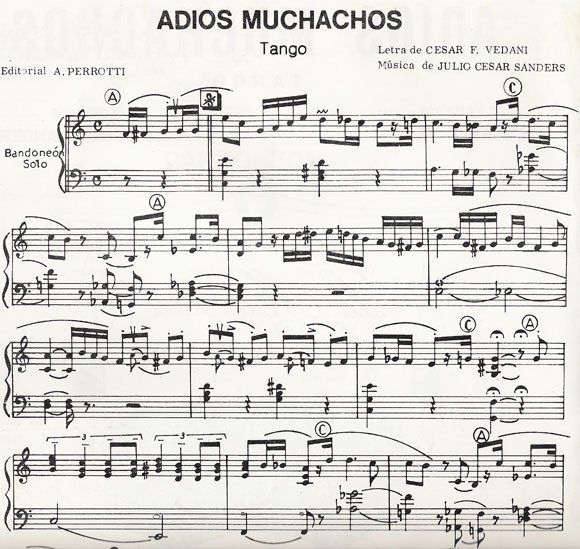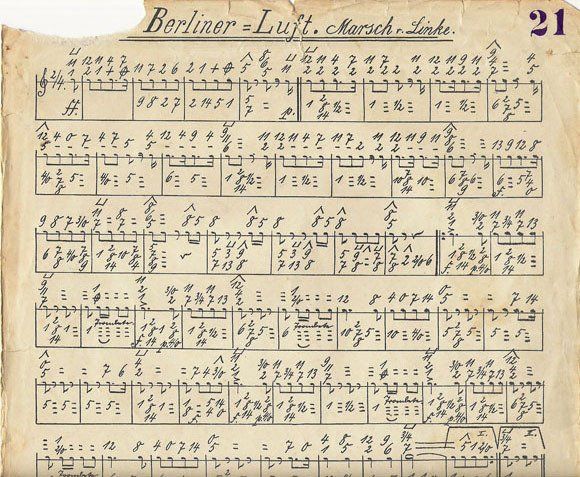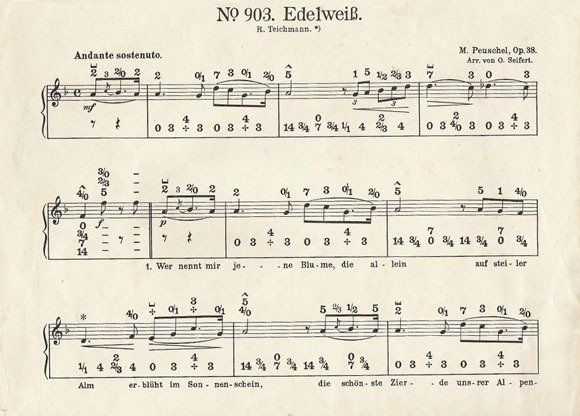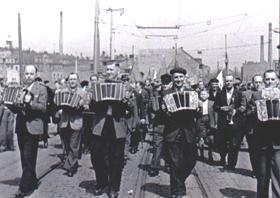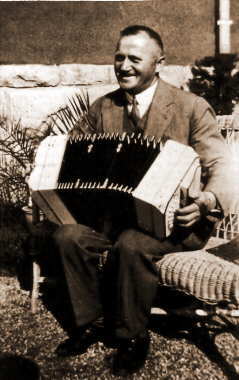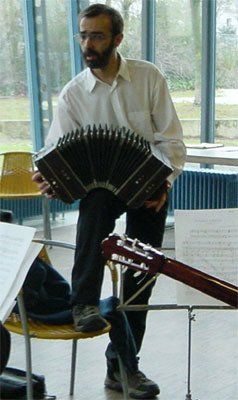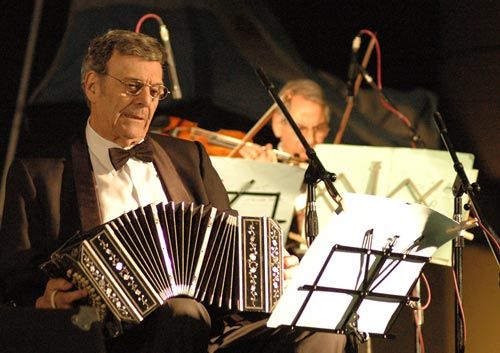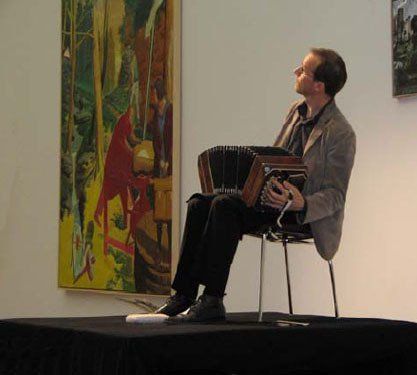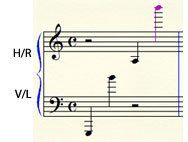Bandoneonets utvikling fra avansert trerader med 56 toner til fire selvstendige fullt kromatiske instrumenter (to i venstre hånd og to i høyre) med 142 toner eller mer som spenner over mer enn fem oktaver.
This website is best viewed on a desk top or lap top computer. Some images will not adjust to the mobile screen.
Free-reed instruments
There are many reed instruments. Some are single-reed instruments (clarinet and saxophone) and some are double-reed instruments (oboe, cor Anglais, bassoon and contrabassoon) which have reeds made from a thin strip of cane. Church organs have reeds too but made of metal. The tones of both types of instruments are produced by a current of air -- either from the player's lungs or from bellows -- which strikes the reeds and causes them to vibrate. Yet none of these reeds are free-reeds; they are beating-reeds, that is, the reeds strike against another object to produce the sound. The free-reeds do not strike against anything while vibrating. It is called 'free' because it has an elastic tongue which vibrates freely within a frame.
Message from editor [If this text is showing in a pop-up, press the escape key.]
Free reed aerophone is a musical instrument where sound is produced as air flows past a vibrating reed in a frame. Higher or lower air pressure is generated by blowing or sucking, or with opening or closing the bellows.
The following illustrations depict the type of reeds typical of harmonicas, accordions and reed organs as it goes through a cycle of vibration. One side of the reed frame is omitted from the images for clarity; in actuality, the frame surrounds the reed on four sides.
Each time the reed passes through the frame, it interrupts air flow. These rapid, periodic interruptions of the air flow initiate the audible vibrations perceived by the listener. In a free-reed instrument, it is the physical characteristics of the reed itself, such as mass, length, cross-sectional area and stiffness that primarily determine the pitch (frequency) of the musical note produced. Of secondary importance to the pitch are the physical dimensions of the chamber in which the reed is fitted, and of the air flow.
In order to generate tones both by expanding and compressing the bellows, free-reeds usually have double sets of reeds with one-way valves.
Reed board from bandoneon, circa 1940. Dual voice 4’ + 8’, tuned in octaves with trapezoid steel reeds (like ordinary accordions) riveted to common zinc plates.
Keyboard mechanics in a two-voiced bandoneon
.....choose a language for the labels by clicking on a country flag
Animation by Steve Morrall
The anatomy of the bandoneon
Click + to expand captions list in your language
Click + to expand captions list in your language
Tonekammerarrangement - Tone chamber arrangement
Animation by Steve Morrall
11 Tonekammerbunn
14 Tonestokkrygg
18 Monteringsplate
19 Tonehull
11 Reed chamber bottom
14 Reed block back
18 Mounting board
19 Tone hole
11 Kanzellenwand
14 Stimmstockkrücken
18 Montierboden
19 Tonlock
Click + to expand captions list in your language
Bandoneonets Utvikling
Bandoneon Development
There are 8 slides to view. Hover mouse over image to pause,
or click on arrows to advance/reverse.
Notesystemer for bandoneoner og konsertinaer
I de første bandoneon- og konsertina manualene og notene ble det brukt vanlige noter, omtrent som piano- noter, med G-nøkkel
i høyre hånd og F-nøkkel
i venstre .
Tegnene
og
betydde henholdsvis belg utover og belg innover, og tallet eller tegnet for den aktuelle knappen ble skrevet over hver enkelt tone. Denne noteringsformen har alltid vært benyttet i Sør-Amerika, selv om det nok blant de første bandoneonistene der var få som kunne lese noter.
Notation systems for bandoneon and concertinas
The first bandoneon and concertina manuals and other written music was written like piano sheet music, with the G-clef
for the right hand and the F-clef
for the left.
The symbols
and
and denoted bellows open and bellows close, respectively, and the numbers/symbols of the separate keys were written into the staves. This notation has always been used in South- America, although the first bandoneonists there probably did not read sheet music.
I Tyskland oppsto det et eget noteringssystem for bandoneon og konsertina, det såkalte klessnor-systemet (fordi det minner om klær som henger på en klessnor). Bakgrunnen var nok at mange bandonenister ikke kunne lese noter. Systemet benytter tallene/symbolene på hver knapp, samt tegnene for belg utover og belg innover, og heltoner, halvtoner fjerdedelstoner osv. for å angi toneverdier. Etter hvert kom det også et system der melodien var skrevet ned vanlige noter, mens akkompagnementet var notert med tall. I dag brukes vanlige noter for både høyre og venstre hånd også i Tyskland.
In Germany a new notation system for bandoneons and concertinas was developed, the so called ”wash-line” notation (because it looks like clothes on a line). The reason was probably that many of the bandoneonists could not read ordinary sheet music. The system uses the numbers/symbols on each button, plus the symbols of bellows open and bellows close. It also uses whole, half, quarts etc. tones for timing. Another transitional system was also used, where the melody was written in ordinary notation and the accompaniment with numbers. To day the Germans use ordinary (piano) notation.
Stemming
Et 142 eller 144-toners bandoneon kan spille nesten alle halvtoner fra kontra G til trestrøken a, både på åpning og lukking. Det er overlapp mellom de to sidene med vel én oktav. Bandoneoner med argentinsk system er alltid oktavstemt, dvs. at når en tone spilles klinger to tunger som er stemt akkurat en oktav forskjellig, 8’ (fot) for den laveste og 4’ for den høyeste. Betegnelsene er hentet fra kirkeorgelet der tallene står for lengden av de tilsvarende orgelpipene. Tyske bandoneoner kan enten være oktavstemte eller tremolostemte. Tremolostemming vil si at to tunger som klinger samtidig er stemt nesten likt, som gir en mer typisk trekkspillyd.
Den tonen som klinger på knapp nummer 2 når belgen åpnes på både bandoneon og konsertina angir instrumentets hovedtone. Denne er vanligvis enstrøken a. Det hender imidlertid at eldre tyske bandoneoner kan være stemt med en annen hovedtone. Grunnen til dette var nok at det skulle være lettere å spille sammen med andre instrumenter, for eksempel B-instrumenter, uten å måtte transponere. For å finne ut om et instrument er konsertina eller bandoneon kan man prøve knapp nr. 14. Dersom den klinger likt ved begge belgretninger dreier det seg om en konsertina.
Selve stemmingen er som på vanlig trekkspill- Hvis man ønsker en høyere tone files litt masse vekk fra tungespissen, mens en lavere tone oppnås ved å fjerne masse fra tungeroten, ev. legg til litt på spissen (lodd).
Tuning
A 142 or 144 tone bandoneon can play almost all semitones from contra G to three lined a, both on opening and closing of the bellows. The two sides of the instrument overlap with about one octave. Bandoneons with Argentinean tuning are always octave tuned, i.e. when one tone is played two reeds sound exactly one octave apart. 8’ (feet) and 4’. The feet-denominations are taken from the church organ where the numbers indicate the length in feet of the corresponding pipe. German bandoneons can be both octave and tremolo tuned. With tremolo tuning two reeds with almost the same tuning sing together, this gives a more typical accordion sound.
The sound from button no. 2 when the bellows open on both bandoneons and concertinas indicates how the instrument is tuned. It is usually a one-lined a, but older German bandoneons may have different basic tuning. The reason for this was probably to make it easier to play together with other instruments, e.g. Bb instruments, without having to transpose the music. To find whether an instrument is a concertina or a bandoneon try button no. 14. For concertinas the tone is the same for bellows out and bellows in.
The tuning process is like any accordion. If you want a sharper tone, you file away some mass from the reed tip, while filing on the reed root, or adding some mass at the tip (weights) give a flatter tone.

